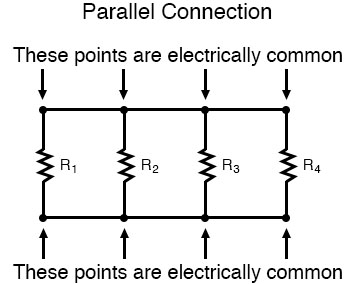The QuestionSuperUser reader Modest is curious about the data transfer rates of parallel and serial connections:Intuitively, you would think that parallel data transmission should be faster than serial data transmission; in parallel you are transferring many bits at the same time, whereas in serial you are doing one bit at a time.So what makes SATA interfaces faster than PATA, PCI-e devices faster than PCI, and serial ports faster than parallel?While it’s easy to fall into the reasoning that SATA is newer than PATA, there must be a more concrete mechanism at work than just age. The AnswerSuperUser contributor Mpy offers some insight into the nature of the transmission types:You cannot formulate it this way.Serial transmission is slower than parallel transmission given the same signal frequency. With a parallel transmission you can transfer one word per cycle (e.g. 1 byte = 8 bits) but with a serial transmission only a fraction of it (e.g.
Tajima Serial Connection Vs Parallel Circuit
Serial Vs Parallel Port
In a parallel connection, the eight bits that leave at the same time don't arrive at the other end at the same time; some will get there later than others. This is called skew. There are 2 different ways of connecting batteries together to make a larger bank. Parallel Connections – These connections are used when you want to increase the amperage of your battery bank. Commonly, parallel-only connections are found in 1. Parallel-in to Serial-out (PISO) Shift Register. The Parallel-in to Serial-out shift register acts in the opposite way to the serial-in to parallel-out one above. The data is loaded into the register in a parallel format in which all the data bits enter their inputs simultaneously, to the parallel input pins P A to P D of the register.


1 bit).The reason modern devices use serial transmission is the following:. You cannot increase the signal frequency for a parallel transmission without limit, because, by design, all signals from the transmitter need to arrive at the receiver at the same time. This cannot be guaranteed for high frequencies, as you cannot guarantee that the signal transit time is equal for all signal lines (think of different paths on the mainboard). The higher the frequency, the more tiny differences matter. Hence the receiver has to wait until all signal lines are settled — obviously, waiting lowers the transfer rate.
Cached
Another good point (from ) is that one needs to consider crosstalk with parallel signal lines. The higher the frequency, the more pronounced crosstalk gets and with it the higher the probability of a corrupted word and the need to retransmit it. 1So, even if you transfer less data per cycle with a serial transmission, you can go to much higher frequencies which results in a higher net transfer rate.1 This also explains why (Parallel ATA with increased transfer speed) had twice as many wires as pins.
Parallel Vs Serial Cable

What Is Serial Communication And How It Works? [Explained]
Every second wire was grounded to reduce crosstalk.Scott Chamberlain echoes Myp’s answer and expands upon the economics of design:The problem is synchronization.When you send in parallel you must measure all of the lines at the exact same moment, as you go faster the size of the window for that moment gets smaller and smaller, eventually it can get so small that some of the wires may still be stabilizing while others are finished before you ran out of time.By sending in serial you no longer need to worry about all of the lines stabilizing, just one line. And it is more cost efficient to make one line stabilize 10 times faster than to add 10 lines at the same speed.Some things like PCI Express do the best of both worlds, they do a parallel set of serial connections (the 16x port on your motherboard has 16 serial connections). By doing that each line does not need to be in perfect sync with the other lines, just as long as the controller at the other end can reorder the “packets” of data as they come in using the correct order.The does a very good explination in depth on how PCI Express in serial can be faster than PCI or PCI-X in parallel.TL;DR Version: It is easier to make a single connection go 16 times faster than 8 connections go 2 times faster once you get to very high frequencies.Have something to add to the explanation? Sound off in the the comments. Want to read more answers from other tech-savvy Stack Exchange users?.

